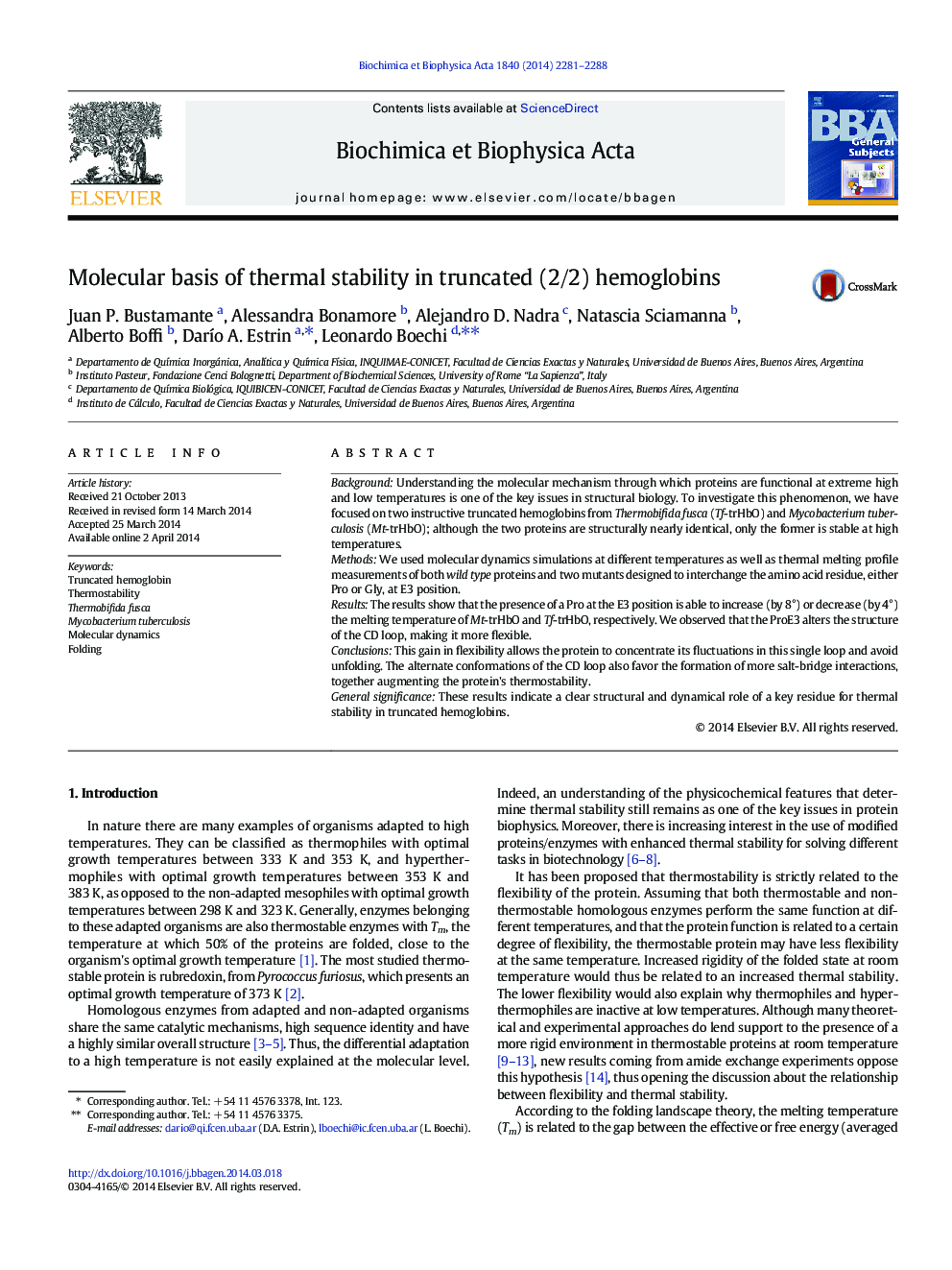| Article ID | Journal | Published Year | Pages | File Type |
|---|---|---|---|---|
| 1947504 | Biochimica et Biophysica Acta (BBA) - General Subjects | 2014 | 8 Pages |
•The protein thermal stability has been significantly affected by a single mutation.•The mutation promotes changes on structural flexibility and polar interactions.•Our results confirm the key role of flexibility in protein thermal stability.
BackgroundUnderstanding the molecular mechanism through which proteins are functional at extreme high and low temperatures is one of the key issues in structural biology. To investigate this phenomenon, we have focused on two instructive truncated hemoglobins from Thermobifida fusca (Tf-trHbO) and Mycobacterium tuberculosis (Mt-trHbO); although the two proteins are structurally nearly identical, only the former is stable at high temperatures.MethodsWe used molecular dynamics simulations at different temperatures as well as thermal melting profile measurements of both wild type proteins and two mutants designed to interchange the amino acid residue, either Pro or Gly, at E3 position.ResultsThe results show that the presence of a Pro at the E3 position is able to increase (by 8°) or decrease (by 4°) the melting temperature of Mt-trHbO and Tf-trHbO, respectively. We observed that the ProE3 alters the structure of the CD loop, making it more flexible.ConclusionsThis gain in flexibility allows the protein to concentrate its fluctuations in this single loop and avoid unfolding. The alternate conformations of the CD loop also favor the formation of more salt-bridge interactions, together augmenting the protein's thermostability.General significanceThese results indicate a clear structural and dynamical role of a key residue for thermal stability in truncated hemoglobins.
